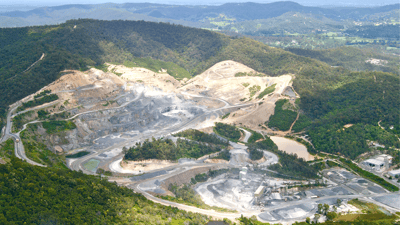In 2022, businesses are facing massive challenges and mining is no exception.
Mining is seeing many of the same challenges faced by many businesses which include rising costs, geopolitical risks and supply-chain crunch.
In addition to these external factors, mining companies are under increased scrutiny from an environmental perspective. The pressure is coming from multiple sides as environmentalists, governments and sophisticated investors require more transparency around ESG goals, emission targets and supply chain management.
What are other mining CEO's saying?
In White & Case's 2022 Mining Metals Market Survey executives noted that ESG is a key risk for the industry in 2022. White & Castle survey results match similar reports produced by Deloitte and Ernst and Young.
 Increase in productivity to meet global demand
Increase in productivity to meet global demand
Australia's resource and energy export earnings are forecast to hit a record $425 billion in 2021 - 2022.
This demand is attributed to several factors which include, a low Australian dollar, high demand, and high prices.
Although resources like coal experienced a decline in Australia, mining for in demand resources such as cobalt, nickel, lithium continues to generate high demand. According to the Department of Industry, Science, Energy and Resources, the demand for these types of natural resources is currently offsetting economic losses of economies who are transition out of coal.
Mining organisations are using this demand to capture new markets and new customers. A perfect example of this is the electronic car maker, Tesla. Tesla uses Nickel in their batteries and has signed agreements with BHP and Talon Metals to secure supply of nickel for their electric vehicles. Tesla is not only the only automakers who is racing to secure supply of these precious resources, with General Motors, Volkswagen and BMW joining the nickel race.
In an article published by NPR in March, 2022, they wrote about how automakers aren't just ordering from mines. In some cases they are co-investing directly in mines to secure supply of essential metals used in these vehicles. This creates increased investment and increased demand for mining operations, however, there is also add additional pressure on mining organisation to ensure transparency in its supply chain as automakers are susceptible to changes in public perceptions and reputational damage from partnerships gone awry.
Trends in Decarbonisation
In 'Climate Risk and decarbonisation what every miner needs to know" McKinsey and Co, noted that miners should be on the lookout for technologies that support decarbonisation. . Technologies like wind turbines, solar photovoltaics, electric vehicles and drones are considered to be part of the solution to a decarbonised future. But, the million-dollar question are mines be part of a decarbonised future?
And, the answer is an empathic yes from the industry.
Companies like Shell, Repsol, Equinor, Total and BP have developed long term energy investment targets to reduce energy emissions. Furthermore, decarbonisation of sectors like mining is helped by the cost reduction of technologies, such as digital twins and drones.
.png?width=2240&name=Blog%20Picture_MINE_MEasure%20Australia_POST17.06.2022%20(1).png)
Why DRONES make sense
In Mckinsey & Co's report they noted that technological advancements can be of assistance to help mining companies prepare for the technological advancement of the future.
Technologies that make it safer to operate underground mines, such as collision detection and atmospheric monitoring, driverless trucks, automated drills, automatic longwall shearers, ground control vibrations tools and drone are just one of the many innovations that miners are using to keep ahead of the technological innovation curve. Measure Australia has helped several mining companies save costs by using drone to conduct cost effective land surveys.
Technology likes drones can save mining organisations time and costs. Drone-borne imagery has facilitated topography and geology mapping, especially in remote and difficult regions. Measure Australia has helped several mining companies save costs by using drone to conduct cost effective land surveys.

Land surveying by using drone enabled technology minimises risks for on-site work. Instead of having staff on-site you can use drones to capture images of site, land density and thermal dynamic imaging BEFORE your staff get there. Drone capture technology also empowers mining companies to extend the lifecycle of plant and equipment by limiting the use of these vehicles until absolutely necessary.
As these reports suggests, mining companies are facing numerous challenges. Mining executives need to guide their businesses through managing the competing demands of stakeholders, the global supply chain crunch for in-demand resources and addressing technological innovation gaps to address the demands of the market.

